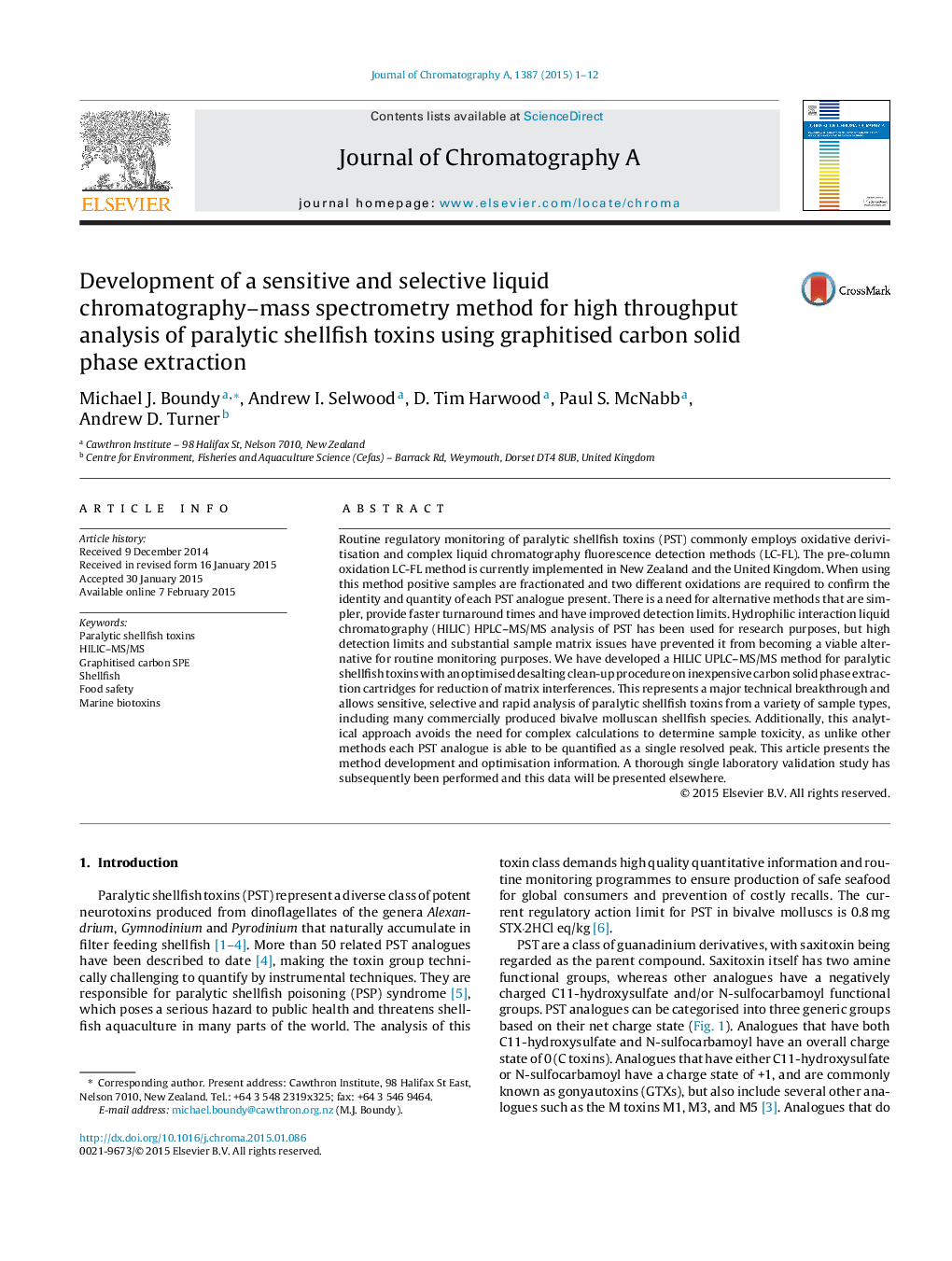| Article ID | Journal | Published Year | Pages | File Type |
|---|---|---|---|---|
| 1199357 | Journal of Chromatography A | 2015 | 12 Pages |
•Quantitative determination of 19 paralytic shellfish toxins in shellfish.•Novel shellfish matrix clean-up using non-porous graphitised carbon SPE.•Rapid (11 min) UPLC HILIC–MS/MS method for PSP monitoring.•Chromatographic resolution of toxin epimer pairs such as GTX1 and GTX4.
Routine regulatory monitoring of paralytic shellfish toxins (PST) commonly employs oxidative derivitisation and complex liquid chromatography fluorescence detection methods (LC-FL). The pre-column oxidation LC-FL method is currently implemented in New Zealand and the United Kingdom. When using this method positive samples are fractionated and two different oxidations are required to confirm the identity and quantity of each PST analogue present. There is a need for alternative methods that are simpler, provide faster turnaround times and have improved detection limits. Hydrophilic interaction liquid chromatography (HILIC) HPLC–MS/MS analysis of PST has been used for research purposes, but high detection limits and substantial sample matrix issues have prevented it from becoming a viable alternative for routine monitoring purposes. We have developed a HILIC UPLC–MS/MS method for paralytic shellfish toxins with an optimised desalting clean-up procedure on inexpensive carbon solid phase extraction cartridges for reduction of matrix interferences. This represents a major technical breakthrough and allows sensitive, selective and rapid analysis of paralytic shellfish toxins from a variety of sample types, including many commercially produced bivalve molluscan shellfish species. Additionally, this analytical approach avoids the need for complex calculations to determine sample toxicity, as unlike other methods each PST analogue is able to be quantified as a single resolved peak. This article presents the method development and optimisation information. A thorough single laboratory validation study has subsequently been performed and this data will be presented elsewhere.
